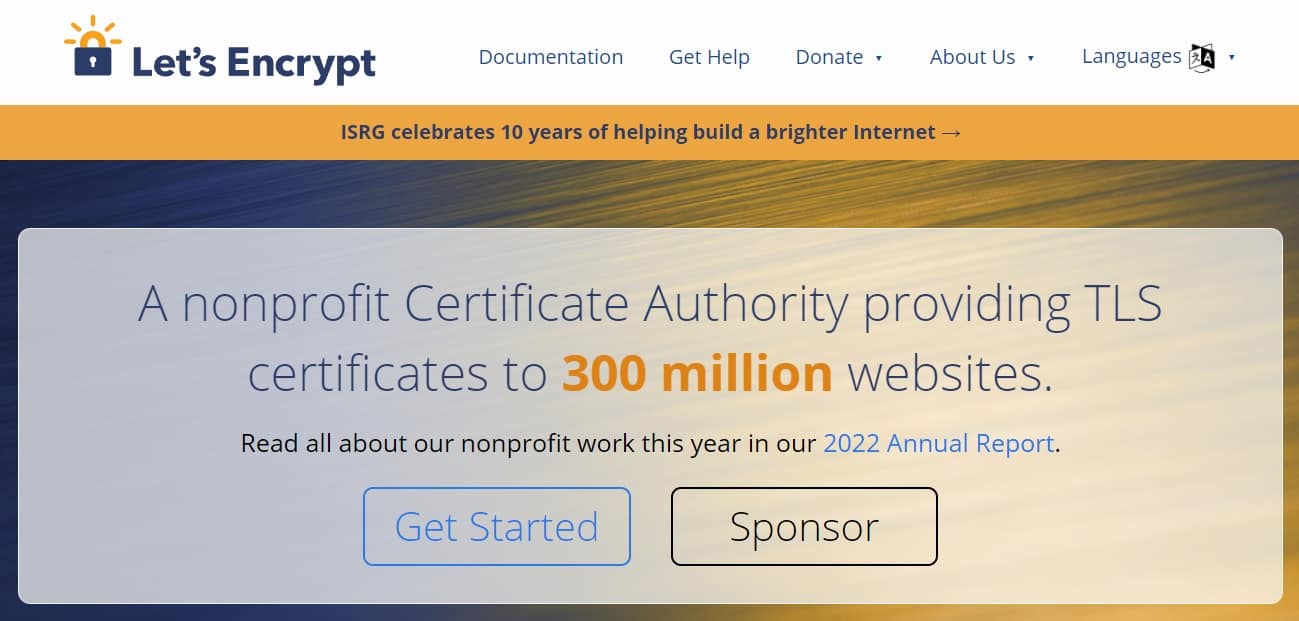Obtaining a free SSL certificate for your WordPress website is an important step in enhancing security, user trust, and SEO rankings. This comprehensive guide will provide you with detailed instructions on how to secure your WordPress site with a free SSL certificate through Let’s Encrypt, a widely recognized certificate authority.
What is SSL Certificate? Why WordPress Site Need An SSL Certificate ?
SSL (Secure Sockets Layer) is a technology that encrypts the communication between a web server and a user’s web browser. This encryption ensures that data transferred between the two is secure and cannot be intercepted by malicious actors. Here’s why SSL is essential for your WordPress website:
- Security: SSL encrypts sensitive data such as login credentials, personal information, and payment details, making it much more difficult for hackers to intercept and misuse this data.
- User Trust: When users see the padlock symbol (or “Secure” in the address bar) and “https://” in the URL, they know the site is secure. This builds trust, especially if your website handles sensitive information.
- SEO Benefits: Search engines like Google favor websites with SSL certificates. Websites with HTTPS typically rank higher in search results.
- Legal and Compliance Requirements: In some cases, legal and industry-specific compliance requirements necessitate the use of SSL certificates.
How to get a free SSL certificate for your WordPress website ?
Paid SSL certificates typically come with a significant price tag. If you are a website owner and you’re in the initial stages of launching a blog or creating a do-it-yourself business website, you probably aim to minimize expenses.
Fortunately, there are several methods available to acquire a free SSL certificate for your WordPress website, effectively reducing your website costs. In this article, we will guide you through the process of obtaining a free SSL certificate for your WordPress site and setting it up independently.

Option 1: Check with Your Hosting Provider
The first and easiest option is to check whether your hosting provider offers free SSL certificates through Let’s Encrypt. Many reputable hosting providers do, and they often have built-in support for SSL certificate installation.
Here are the general steps:
- Log in to Your Hosting Control Panel: Access your hosting account’s control panel. This is typically cPanel, Plesk, or a similar interface.
- Locate the SSL Section: In the control panel, navigate to the SSL or Security section.
- Find the Let’s Encrypt Option: Within the SSL section, look for an option related to Let’s Encrypt. Hosting providers often have a dedicated section for managing SSL certificates.
- Generate and Install: Follow the on-screen instructions to generate and install your Let’s Encrypt SSL certificate. This process typically involves selecting the domain you want to secure and clicking a button to generate the certificate.
- Verify Installation: Once the certificate is installed, verify its installation by accessing your website using “https://.” You should see the padlock symbol in your browser, indicating a secure connection.
Remember that the specific steps can vary depending on your hosting provider, so consult your hosting provider’s documentation or support resources for more details.
Option 2: Use a WordPress Plugin To use Let’s Encrypt
If your hosting provider doesn’t offer integrated support for Let’s Encrypt, you can use a WordPress plugin to facilitate the process. One popular plugin for this purpose is “Really Simple SSL.”
Here’s how to use a WordPress plugin:
- Log in to Your WordPress Dashboard: Access your WordPress admin area by going to your website’s URL followed by “/wp-admin.”
- Install and Activate the “Really Simple SSL” Plugin: a. In your WordPress dashboard, navigate to “Plugins” in the left-hand menu. b. Click “Add New.” c. In the search bar, type “Really Simple SSL.” d. Install and activate the plugin.
- Plugin Configuration: a. After activation, the “Really Simple SSL” plugin will detect your SSL certificate status. b. If an SSL certificate is not already installed, the plugin will guide you through the process of setting up a free Let’s Encrypt SSL certificate. c. Follow the plugin’s prompts and instructions to enable SSL on your site.
- Verify Installation: Once the process is complete, verify the installation by accessing your website using “https://.” Your site should now have a secure connection.
Option 3: Use a Third-Party Service That Offers Free SSL
If your hosting provider doesn’t offer support for Let’s Encrypt, you can still obtain a free SSL certificate using a third-party service like Cloudflare. Cloudflare not only provides free SSL certificates but also offers additional security features.
Here’s how to set up Cloudflare for your WordPress site:
- Sign Up for a Cloudflare Account: a. Go to the Cloudflare website (https://www.cloudflare.com/). b. Sign up for a free Cloudflare account.
- Add Your WordPress Site: a. In your Cloudflare dashboard, click “Add Site” and enter your domain name. b. Follow the instructions to scan your DNS records and confirm them. This process usually involves changing your DNS nameservers to those provided by Cloudflare.
- Set Your SSL Encryption Mode: a. In your Cloudflare dashboard, go to the “SSL/TLS” section. b. Set your SSL encryption mode to “Full” or “Full (Strict)” for a secure connection.
- Update Your WordPress Settings: a. Log in to your WordPress dashboard. b. Go to “Settings” > “General.” c. Update the “WordPress Address (URL)” and “Site Address (URL)” fields to use “https://.” d. Save your changes.
Option 4: Manual Installation
If your hosting provider does not offer support for Let’s Encrypt, and you’re comfortable with more technical processes, you can manually obtain and install a Let’s Encrypt certificate. This method involves using the Certbot client and may require SSH access to your server. Here are the general steps:
- SSH into Your Web Server: a. Use an SSH client to connect to your web server.
- Install Certbot: a. Use the package manager or commands specific to your server’s operating system to install Certbot.
- Request and Install the SSL Certificate:
a. Run the Certbot command to request and install an SSL certificate for your domain.
The command typically looks like this:certbot --apache -d yourdomain.com
b. Certbot will guide you through the process and ask for information such as your email address and agreement to the terms of service. c. Certbot will automatically configure your web server to use the SSL certificate. - Verify Installation: a. After completing the process, verify the SSL certificate installation by accessing your website using “https://.” You should see the padlock symbol, indicating a secure connection.
Please note that manual installation can be more complex and may vary depending on your server’s configuration and the version of Certbot you are using. Consult Certbot’s documentation and your server’s documentation for specific instructions.
Configuring WordPress for HTTPS
After successfully obtaining and installing your SSL certificate, you need to configure your WordPress website to use HTTPS. This is a crucial step to ensure that all your site’s resources are loaded securely. Here’s how to do it:
- Log in to Your WordPress Dashboard: a. Access your WordPress admin area by going to your website’s URL followed by “/wp-admin.”
- Update WordPress Address (URL) and Site Address (URL): a. In your WordPress dashboard, navigate to “Settings” in the left-hand menu and click “General.” b. Update the “WordPress Address (URL)” and “Site Address (URL)” fields to use “https://” instead of “http://.” c. Save your changes.
- Update Links and Content: a. After changing your website’s URL to “https://,” it’s essential to update internal links and content within your website to use “https://” as well. You can use a plugin like “Better Search Replace” to automate this process.
- Update External Resources: a. Check for any external resources (like embedded videos or third-party scripts) on your site that still use “http://.” Update these to “https://” to ensure that all content is loaded securely.
- Update Google Search Console: a. If you’ve previously added your site to Google Search Console (formerly Webmaster Tools), update your property to include the “https://” version of your site.
- Test Your Website: a. After making these changes, thoroughly test your website to ensure that all resources are loading securely, and there are no mixed content issues (a mix of “http://” and “https://” resources on a single page).
- Redirect HTTP to HTTPS (Optional): a. To ensure that all traffic is secure, consider setting up a 301 permanent redirect from the “http://” version of your site to the “https://” version. You can do this through your hosting control panel or by using a WordPress plugin like “Really Simple SSL.”
Conclusion
Obtaining a free SSL certificate for your WordPress website is a crucial step in enhancing its security, building trust with your visitors, and improving its search engine rankings. You have multiple options to secure your website, whether through your hosting provider’s support for Let’s Encrypt, WordPress plugins, third-party services like Cloudflare, or manual installation with Certbot.
Whichever method you choose, be sure to follow the appropriate steps for your specific situation and test your site thoroughly to ensure that it’s loading securely over HTTPS. With an SSL certificate in place, your WordPress website will be well-prepared to provide a safe and secure browsing experience for your visitors.


